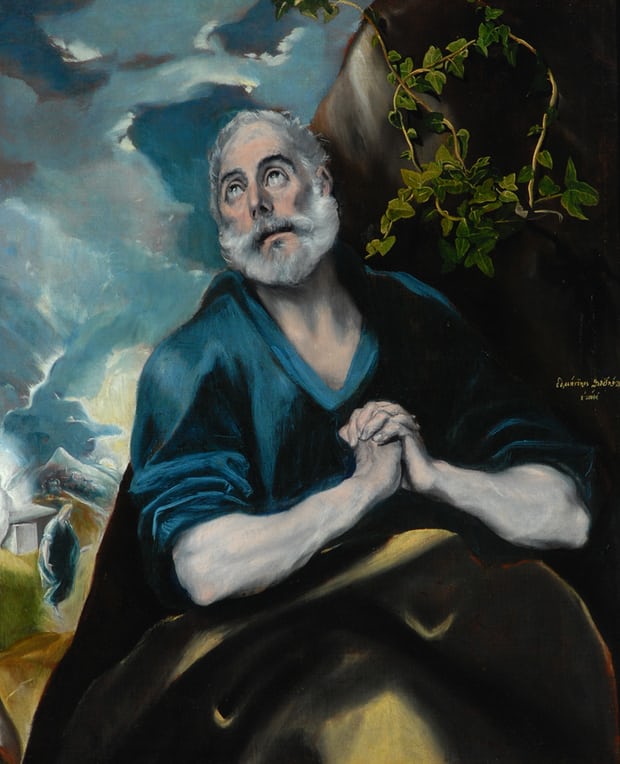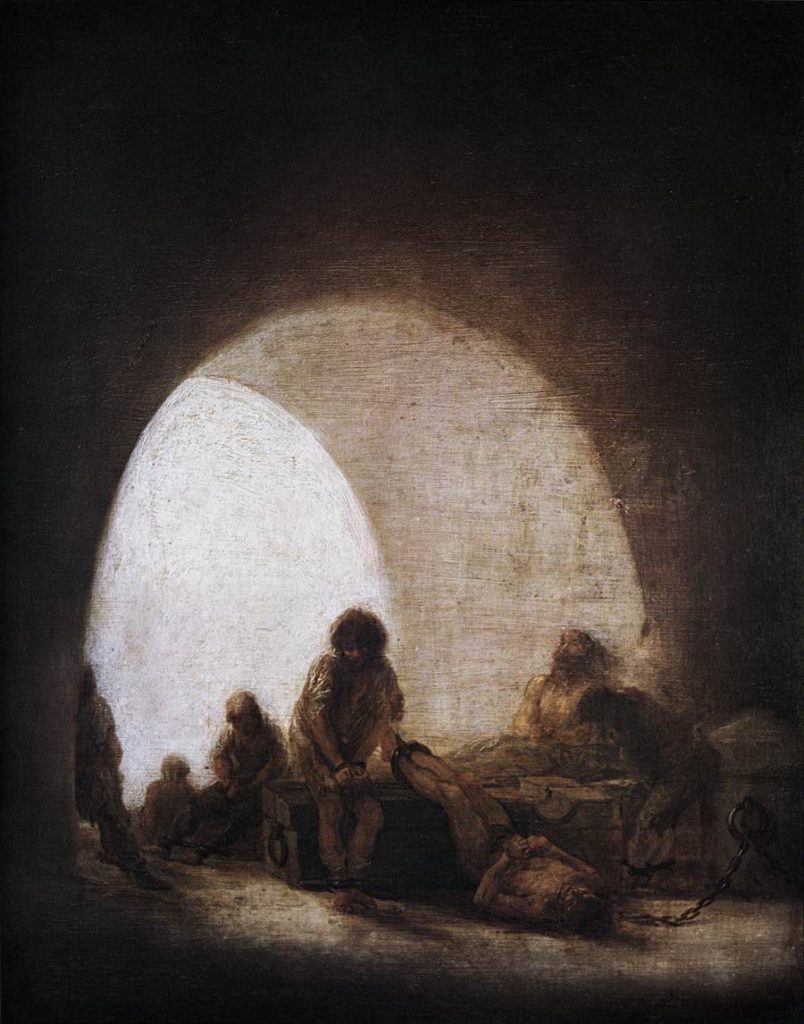El Greco to Goya – Spanish Masterpieces from The Bowes Museum
Wallace Collection, London
Until 7th January 2018
The Bowes Museum has been on my list of places to visit for some time now, so when the Wallace Collection announced that they would be showing a selection of their Spanish masterpieces I knew that it would be an unmissable opportunity. The two intimate galleries display paintings that span 300 years of Spanish painting, and within those works can be seen the social, political and religious changes that the country withstood. Yet common themes and stylistic traits tie the selection together, giving a clear impression of what the painters experienced and what art represented during those times.
The star of the show for me was The Tears of St Peter (1580-89) by El Greco (Domenikos Theotokopoulos). The extreme emotion and piety emanates from the canvas. The saint, who denied Jesus three times, casts his tear-filled eyes towards heaven. The power of his regret is tangible as he clasps his hands in a desperate plea to be forgiven. His act of confession, looking directly to God to be absolved, reflects the purpose of the painting; to inspire true reflection on one’s sins and to earn atonement. After all, Peter was just a man, and religious or not we can all relate to the frailty of the human condition. The typical El Greco sky in the background is apocalyptic, perhaps symbolic of judgement and the time when we will all be called upon to answer to our actions. Ghostly out lines of mountains and a figure seem to dissolve away, leaving us to fully focus on the subject at hand. The artist returned to Saint Peter many times in his works, but I think this version is one of the best.
In contrast to El Greco is Goya. His vision of Interior of a Prison (1793-94) shows the painter’s preoccupation with the earthly rather than the spiritual realm. Renown for his critical commentary on the conflicts he lived through, Goya got to the core of his subject by focussing on the individual’s experience. He uses light and shadow to create a stage upon which he can explore the desolate and deplorable state of the Spanish prison. The arch of white light against blackish-browns create a non-descript depth and give a seemingly endless, cavernous darkness. The prisoners, fellow human beings, are treated as vermin, kept in disgusting conditions and left to rot. The stark, bleak light tells us nothing of the time of day or season. As a compositional device it exposes the prisoners, showing us their murky figures, highlighting their tattered clothes and sinewy bodies. Their poses are restless, strained and exhausted. Goya often selected scenes such as this to emphasise the effects of war on the ordinary man and explore the psychological element of art. He was always conscious of the fragility of life and ever-present threat of insanity. Like the religious paintings nearby we are being asked to reflect on our humanity, to put ourself in the place of others and feel compassion towards our fellow man.
Other stand-out pieces in the exhibition are Juan de Valdés Leal‘s monumental St Eustochium, and the Immaculate Conception by José Claudio Antolinez, a typical Spanish Baroque vision with its warm pastel pink light, frothy textures and (rather grotesque) putti. Lesser known Spanish painters are represented here, such as Juan van der Hamen y León and El Greco’s assistant Luis Tristán de Escamilla.


